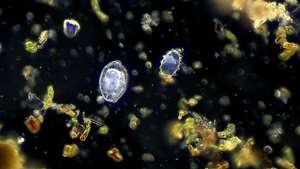
The Biology of COVID-19 and How Vaccines Work
In the wake of the global COVID-19 pandemic, understanding the biology of the virus and the role of vaccines has become crucial for navigating these challenging times. The SARS-CoV-2 virus, responsible for the disease, has presented an unprecedented threat to public health. In this article, we delve into the biology of COVID-19 and explore how vaccines play a pivotal role in combating the spread of the virus.

The Biology of COVID-19
SARS-CoV-2 is a novel coronavirus, belonging to the family Coronaviridae. It primarily targets the respiratory system, causing a range of symptoms from mild respiratory distress to severe pneumonia and, in some cases, fatal acute respiratory distress syndrome (ARDS). The virus gains entry into human cells through the angiotensin-converting enzyme 2 (ACE2) receptor, which is abundantly present on the surface of respiratory tract cells.
Upon entering the host cell, the virus utilizes its genetic material, composed of RNA, to hijack the cellular machinery and replicate. This rapid replication can lead to an overwhelming immune response, triggering inflammation and damage to lung tissue. The ability of SARS-CoV-2 to spread easily from person to person has contributed to the global pandemic.

The Immune Response to COVID-19
The human immune system plays a crucial role in defending against viral infections. In response to SARS-CoV-2, the immune system activates both innate and adaptive immune responses. The innate immune system acts as the first line of defense, triggering a rapid but non-specific response to eliminate the virus. This is followed by the adaptive immune response, which is more specific and targeted.
The adaptive immune system produces antibodies, proteins that recognize and neutralize the virus. Additionally, T cells, a type of immune cell, play a vital role in identifying and eliminating infected cells. The memory component of the adaptive immune system allows the body to "remember" the virus, providing long-term protection against reinfection.

Vaccines: A Weapon Against COVID-19
Vaccines against COVID-19 work by training the immune system to recognize and mount a defense against the virus without causing the disease itself. Several types of vaccines have been developed, each employing different strategies to stimulate an immune response.
1. mRNA Vaccines
The Pfizer-BioNTech and Moderna COVID-19 vaccines are examples of mRNA vaccines. These vaccines contain a small piece of the virus's genetic material, known as messenger RNA (mRNA). Once injected, the body's cells use this mRNA to produce a harmless spike protein similar to the one found on the surface of the SARS-CoV-2 virus. The immune system recognizes this spike protein as foreign, triggering the production of antibodies and the activation of T cells. If the person is later exposed to the actual virus, the immune system is prepared to mount a rapid and effective response.
2. Viral Vector Vaccines
Vaccines like the Oxford-AstraZeneca and Johnson & Johnson vaccines use a viral vector to deliver a modified version of the virus's genetic material. The viral vector, often a harmless adenovirus, carries the genetic instructions for producing the spike protein. Similar to mRNA vaccines, this prompts the immune system to produce antibodies and activate T cells.
3. Protein Subunit Vaccines
Some vaccines, such as Novavax, use a small, harmless piece of the virus, in this case, the spike protein, rather than the genetic material. By presenting the immune system with this viral component, the body learns to recognize and mount a defense against the actual virus.
The Importance of Herd Immunity
Vaccination not only protects individuals but also contributes to the concept of herd immunity. This occurs when a significant portion of the population becomes immune to the virus, either through vaccination or previous infection. As a result, the spread of the virus is slowed, protecting vulnerable individuals who may be unable to receive the vaccine.

Challenges and Future Perspectives
While vaccines have proven to be a powerful tool in controlling the spread of COVID-19, challenges remain. Variants of the virus continue to emerge, requiring ongoing research and the potential development of booster shots to enhance immunity. Additionally, global vaccine distribution and equitable access remain critical to achieving widespread immunity.
Keep Reading, Keep Learning!
Understanding the biology of COVID-19 and the mechanisms of vaccines is paramount in the collective effort to overcome the pandemic. Through the development and distribution of effective vaccines, humanity has taken significant strides in mitigating the impact of SARS-CoV-2.
As we navigate the evolving landscape of the pandemic, continued research and a commitment to global vaccination efforts are essential in achieving a world where COVID-19 is no longer a threat to public health.




